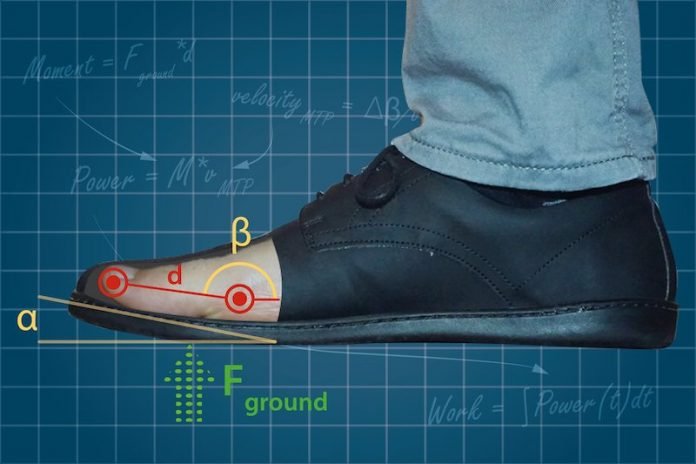
The toe of most shoes, especially sneakers, bends ever so slightly upward.
In a new study, researchers found while that curve, called a toe spring, can make stepping more comfortable and easier, it may also weaken feet and potentially open them up to some common (and painful) foot-related problems.
They found that the more curved a toe spring is, the less power the foot inside the shoe has to exert when pushing off from the ground while walking.
That means foot muscles are doing less work, and this, the researchers hypothesize, may have consequences.
The research was conducted by a team at Harvard.
From an evolutionary perspective, wearing modern shoes that have arch supports, cushioning, and other supportive features is a very recent phenomenon.
Several lines of evidence suggest that weak foot muscles may be partly a consequence of such features.
In this study, the researchers were interested in a nearly ubiquitous element of modern shoes that have not been studied before: the upward curvature at the front of the shoe.
In the experiment, 13 participants walked barefoot and in four pairs of custom-made sandals on a specially designed treadmill.
The treadmill is equipped with force plates and an infrared camera system to measure how much power is put into each step.
The sandals each had varying degrees of toe spring angles—from 10 degrees to 40 degrees. They were designed to mimic the stiffness and shape found in commercially available shoes.
The team found that the propulsive force generated by the metatarsophalangeal or MTP joints (that’s where the toes connect to the rest of your foot bones) decreases as the curve of the toe spring on the specially-made sandals increased.
MTP joints are one of the key features that have evolved so that humans can walk and run on two feet so effectively and efficiently.
The team says this potential muscle weakness could make people more susceptible to medical conditions like plantar fasciitis—a common, hard to repair, and painful inflammation of the thick, web-like band of tissue that connects the heel bone to the toes.
Their next step is to validate their hypothesis in future studies.
One author of the study is Harvard evolutionary biologist Daniel E. Lieberman.
The study is published in Scientific Reports.
Copyright © 2020 Knowridge Science Report. All rights reserved.



